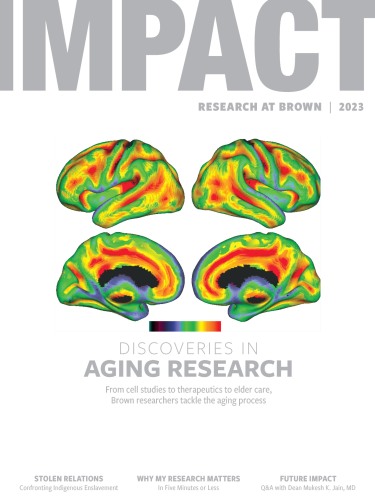Navigating a New Arctic
Melting Arctic ice could transform international shipping routes.
Melting Arctic ice could transform international shipping routes.
With climate change rapidly warming the world’s oceans, parts of the Arctic that were once covered in ice year-round could be ice-free for months on end in as few as two decades.
Climate scientists from Brown and a scholar from the University of Maine School of Law collaborated on a study projecting that the melt- ing of Arctic Ocean ice could create the potential for shorter, more eco-friendly maritime trade routes that bypass the Russia-controlled Northern Sea Route, reducing the shipping industry’s carbon foot- print and weakening Russia’s hold over Arctic trade. The 2022 study was published in the Proceedings of the National Academy of Sciences.
“There’s no scenario in which melting ice in the Arctic is good news,” said Amanda Lynch, the study’s lead author and a professor of earth, environmental, and planetary sciences at Brown. “But the unfortunate reality is that the ice is already retreating, these routes are opening up, and we need to start thinking critically about the legal, environmental, and geopolitical implications.”
Lynch and Xueke Li, a post- doctoral research associate at the Institute at Brown for Environment and Society, modeled four navigation scenarios based on climate change outcomes. Projections showed new international trade routes emerging by midcentury, unless leaders halt warming to 1.5°C within 43 years.
“ There’s no scenario in which melting ice in the Arctic is good news ”
If new pathways do open up, Lynch said, shipping companies could choose those northern routes over the much longer Suez and Panama Canal routes, reducing their greenhouse gas emissions by about 24 percent while also saving money and time.
“These potential new Arctic routes are a useful thing to consider when you recall the moment when the Ever Given ship was stranded in the Suez Canal, blocking an important shipping route for several weeks,” Lynch said. “Diversifying trade routes gives the global shipping infrastructure a lot more resilience.”
